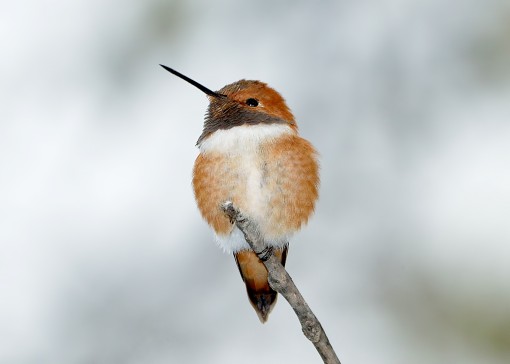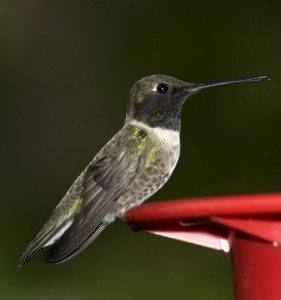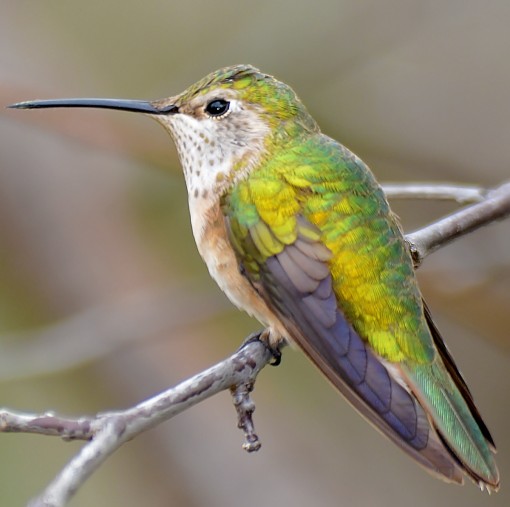The Hummer in Winter
December 7, 2013 | By Shoal Creek Conservancy
This blog post was written by Ted Lee Eubanks. To learn more about the author, please visit this site.

Austin doesn’t do winter well. At the mention of the word “ice” we dissolve into a pipe-wrapping panic. I have banned Christmas songs at my house that mention the word “snow.”
A blue norther whipped through Austin this weekend; we are faced with our first serious freeze of the winter. My tender plants are protected in a little plastic tent that I strung up in the back yard. My rufous hummingbird has no such protection. He is at the mercy of the weather.
I noticed him perched on his regular twig this 29 degree morning. His feathers were so fluffed that he looked like a little red snowman. Fluffed feathers trap air and help insulate him from the frigid weather.

I heard from many of you after I posted my last article about the rufous hummingbird that returned to my yard. Many of you reported that you’re feeding hummingbirds as well. Here are a couple of tips for helping your hummers through this cold spell.
I increase the sugar content in the nectar as long as the temperature is below freezing. Normally I use a ratio of one part sugar to four parts water. Now I will increase the sugar content to 1 part for 3 parts water. All you need to feed hummingbirds is sugar and water. Mix your own, and avoid the red dye that is often added to commercial mixes.
Be sure to bring your feeders inside at night. Don’t let them freeze. Remember to place them back outside at first light. Your wintering hummingbirds depend on you for the nectar that fuels their metabolism. If you can’t meet the obligation don’t feed them in winter. In summer the hummingbirds will simply find other food if you drop the ball. In winter, the bird may drop dead.
Clean your feeders regularly. In winter I can change out the feeders once a week. In the summer they rarely last more than a couple of days. The nectar (sugar water) spoils, so be sure to provide your hummers with fresh food.
Let me know if you are feeding hummers in your Austin yard this winter. Not every bird will be a rufous. I usually have one or two broad-tailed hummingbirds in the yard each winter. Rarities that are possible include Allen’s, black-chinned, and ruby-throated.
Good luck, stay warm, and enjoy your Shoal Creek hummers!
For more information about hummingbirds, I recommend this recent article in the American Birding Association’s The Eyrie, a publication for young birders.

